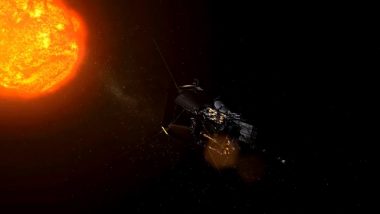Chennai, July 31: The Australian Space Agency on Monday declared that the mysterious object that was located on its beach some days back is most likely debris from an Indian rocket Polar Satellite Launch Vehicle (PSLV). “We have concluded the object located on a beach near Jurien Bay in Western Australia is most likely debris from an expended third-stage of a Polar Satellite Launch Vehicle (PSLV). The PSLV is a medium-lift launch vehicle operated by @isro,” tweeted the Australian Space Agency. The space agency did not state as to how it came to the conclusion “most likely debris from an Indian rocket Polar Satellite Launch Vehicle (PSLV).
“The debris remains in storage and the Australian Space Agency is working with ISRO (Indian Space Research Organisation), who will provide further confirmation to determine next steps, including considering obligations under the United Nations space treaties,” the Australian Space Agency added. Earlier, ISRO said it cannot confirm or deny whether the huge object which had beached in Australia was part of its PSLV rocket.
“We cannot confirm or deny anything about the object without seeing it in person and checking it. First the Australian space agency has to send a video of the object. We have to see the markings if any on it. They have to move the object to a different place. If need be, ISRO officials can go there to confirm whether it belongs to an Indian rocket,” a senior official of ISRO had told IANS preferring anonymity. Speculation was rife amongst the space sector officials and enthusiasts as to whether the huge metallic object that washed ashore in Australia was part of India’s PSLV rocket that went up long back.
The ISRO official added that the Australian Space Agency has approached the Indian space agency in this regard. “We are currently making enquiries related to this object located on a beach near Jurien Bay in Western Australia. The object could be from a foreign space launch vehicle and we are liaising with global counterparts who may be able to provide more information,” the Australian Space Agency had tweeted earlier.
A closer look at the picture shows lots of barnacles on the metallic object which in a way proves that it must have been a very old one and not part of any rocket that was launched recently, including India’s LVM3 that carried Chandrayaan-3 spacecraft.
(The above story first appeared on LatestLY on Jul 31, 2023 04:13 PM IST. For more news and updates on politics, world, sports, entertainment and lifestyle, log on to our website latestly.com).













 Quickly
Quickly





















